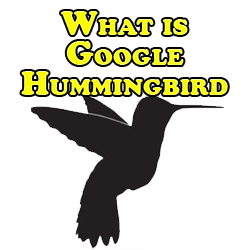Google Hummingbird isn’t simply an algo update; it’s technically meant to replace their traditional search results system altogether. Have I got your attention? It’s not as painful as it sounds. In fact, unlike in major past algorithm updates like Panda or Penguin, SEOers aren’t reporting huge drops in traffic. It’s not as black and white as those updates (see what I did there?). This will be a gradual shift over time, but let’s talk specifically about what is Google Hummingbird and what it’s targeting.
What is Google Hummingbird?
In the past, Google was completely affixed to search terms when it came to ranking content in its search engines and content and later link building techniques reflected this. Keywords are still extremely important when pulling results for users today, but the fashion in which users present those keywords has taken a dramatic change in the last few years and Google is catering to this change with Hummingbird. The change specifically: a boom in mobile users.
Mobile users of Google are a different animal than those who are using it from their homes. One presumptive difference in a mobile user is that they are out and about, or better said they want their information more quickly than someone leisurely browsing at home.
More than that, it’s presumed that mobile users have less time for spam and non-targeted results in their SERPs than other users, so Google is catering to the mobile user above everyone else and to do that, they have to think like a mobile user. Mobile users make heavy use of voice search and consequently are far more likely to ask a question, or in other words search for a long tail keyword, than someone doing a search from their homes. Searches come out more like common speech like queries, so Hummingbird is working to target these kinds of queries more effectively.
What Your Takeaway From Google Hummingbird Should Be
Anyone who has been doing long tail keyword SEO for awhile now should be in good shape as long tail keywords are what more people will be actively searching for.
I’ve heard stories that the mobile and desktop based Googles are very different in the kinds of searches they have returned, but I personally haven’t seen it. It seems to me that Google would want the best results across any device. On top of that, by the logic that they’re doing predominantly long tailed speech like queries, the mobile user is going to use different search terms than desktop users use anyway, so why bother?
Your major takeaway should be to think more like a mobile user moving forward and realize that long tail keywords are going to see an increase as time goes on because more people will be using mobile devices, ergo more people will be searching for long tail keywords than ever before. Those long tail keywords you maybe used to ignore because they only were seeing a couple of searches a month are slowly going to be picking up in volume. Have strong and descriptive content and you’ll reap the benefits of Hummingbird.
Your other major takeaway should be to never put all of your SEO eggs in one basket, meaning do not rely exclusively on search engine traffic, particularly search engine traffic from one engine. Many marketers who don’t think to check Google Analytics don’t realize many times that they themselves are receiving most of their traffic largely from one source.
This is a good a time as any to diversify your traffic so make sure you’re using every traffic source at your disposal.
